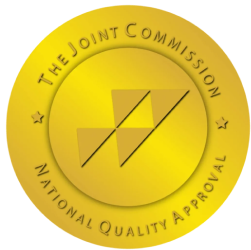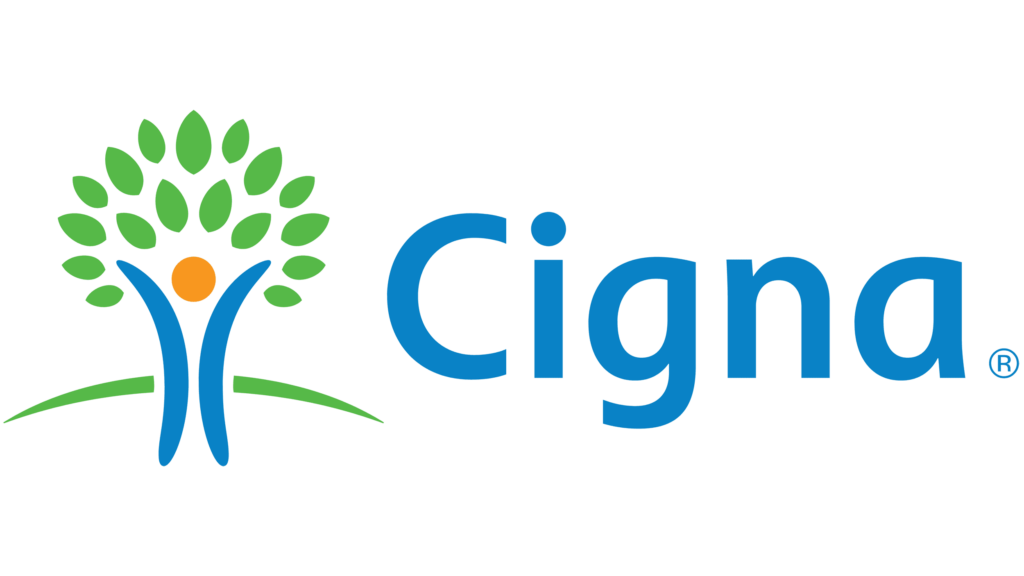 Synthetic marijuana is a class of designer drugs which are synthesized to react with the same receptors in the brain as cannabis. While “synthetic marijuana”, these drugs are not synthetic THC or CBD. Instead, they interact with the cannabinoid receptors in the brain but often create a very different high. This also means that the highs, risks, and side-effects are often extremely different than cannabis itself.
Synthetic marijuana is a class of designer drugs which are synthesized to react with the same receptors in the brain as cannabis. While “synthetic marijuana”, these drugs are not synthetic THC or CBD. Instead, they interact with the cannabinoid receptors in the brain but often create a very different high. This also means that the highs, risks, and side-effects are often extremely different than cannabis itself.
Synthetic marijuana is often sold as K2, spice, and “synthetic marijuana”. Often, it’s sold sprayed onto plant matter – where it can be smoked just like cannabis. In other cases, it’s sold as a “C-liquid” for vaporizers, and even as “incense” which can be burned and inhaled by everyone in the room. They’re also found in many “THC” products like gummy bears, counterfeit cannabis, counterfeit cannabis edibles, counterfeit hashish, and other products.
Synthetic marijuana is made up of a mixture of compounds that bind to the cannabinoid receptors in the body and brain. Today, there are over 142 of these substances registered with organizations for monitoring drugs and their distribution.
This means that a synthetic marijuana product could contain a significantly large number of active ingredients. In addition, it’s impossible to tell what side-effects or exact ingredients are without taking the product to be chemically tested. This means that, like with illicitly manufactured drugs, there is always the risk of overdose and dangerous additives.
Most synthetic marijuana products are less than 10% active ingredient. The rest are additives. Often, these additives are harmless herbs or plant matter. For example, the brand “Spice”, an early synthetic marijuana product, consisted of kitchen herbs like oregano, trim from actual marijuana plants (E.g., the leaves without much active THC), dried and sprayed down with new active ingredients. That plant matter could then be smoked or vaporized, much like the cannabis plant.
On the other hand, additives aren’t always so benign. For example, rat poison like brodifacoum is often used as an additive, because it increases the duration of the high. At the same time, the usage of rat poison in synthetic marijuana is linked to significant and serious health side effects as well as to multiple deaths.
 Synthetic marijuana is most-often sold in small, single-serve containers which are usually labelled “not for human consumption”. These products may be edibles (candy, cookies, gummies, brownies), smokable (herbs, actual cannabis, leaves), or vaporizer liquids and cartridges.
Synthetic marijuana is most-often sold in small, single-serve containers which are usually labelled “not for human consumption”. These products may be edibles (candy, cookies, gummies, brownies), smokable (herbs, actual cannabis, leaves), or vaporizer liquids and cartridges.
In most cases, they’re also stronger than marijuana, because the dose is more potent. They’re also stronger than marijuana because most synthetic cannabinoid reagents bind more strongly to the cannabinoid receptors in the brain than THC or CBD do. Combined with the fact that they are completely unregulated with no concerns for safety, and they can be significantly different than using cannabis.
In most cases, side effects include:
These side-effects make synthetic marijuana an extremely popular festival drug, especially as these products are harder to detect and easier to sneak into venues than cannabis.
 Most people use designer drugs because they are available rather than because they are safe. However, synthetic marijuana can have significant and negative side-effects. For example, most varieties are known to result in symptoms like:
Most people use designer drugs because they are available rather than because they are safe. However, synthetic marijuana can have significant and negative side-effects. For example, most varieties are known to result in symptoms like:
Those symptoms can vary significantly depending on the chemical makeup of the synthetic drug. For example, if the dose you take uses the rat poison brodifacoum, you might experience symptoms like:
Because brodifacoum can persist in the body for weeks, you can have these symptoms for several weeks after taking a dose of Special K or synthetic marijuana. In addition, if you donate blood during that period, you can pass those symptoms on to whoever receives the blood donation. For this reason, it’s important to wait three weeks or more after taking a dose of synthetic marijuana before you donate blood.
Unlike marijuana, it is relatively easy to overdose on synthetic marijuana. However, the amount required to overdose depends on the drug, its strength, and what other drugs are being taken at the same time. Synthetic marijuana is linked to overdose symptoms like:
Any of these side-effects can prove to be fatal if you don’t receive medical attention. Often, that will mean support and medical monitoring until the drug wears out of your system. And, while synthetic marijuana is not a common drug, it still results in close to 10,000 emergency room visits each year.
However, as there is no antidote for synthetic marijuana, treating an overdose can be difficult.
 There are very few studies on the long-term effects of synthetic marijuana. That’s despite the fact that these products have been available since the early 2000s. However, there is very good evidence that most synthetic marijuana products result in chemical dependency. From there, those products can easily create behavioral reliance and therefore addiction.
There are very few studies on the long-term effects of synthetic marijuana. That’s despite the fact that these products have been available since the early 2000s. However, there is very good evidence that most synthetic marijuana products result in chemical dependency. From there, those products can easily create behavioral reliance and therefore addiction.
For example, most have documented withdrawal symptoms like headaches, increased anxiety, increased depression, and increased irritability. However, the severity of withdrawal symptoms normally depends on how much you’ve been using and for how long. Heavy users typically experience heart-attack like symptoms and a risk of seizures. You might also experience difficulty breathing and an inability to sleep while withdrawing.
If you or a loved one is using synthetic marijuana, it’s important to realize that this drug is dangerous. In addition, it is more and more often found contaminated with stronger drugs like fentanyl, which can increase the risk of overdose. Synthetic marijuana is not marijuana, it’s manufactured in a lab, without regulation. This means that any time you take the drug, you’re taking a risk. And, if you can’t stop, go into withdrawal when you try to stop, or keep using despite noticeable adverse health effects, you may be having issues with addiction.
If that sounds familiar, there is help. Behavioral therapy, counseling, and medical withdrawal support can help you to get clean safely, while learning the skills and behaviors to cope with cravings, to treat the underlying problems behind initial drug use, and to get back to your life.
Asana Recovery is located in Orange County, California. and offers detox, residential, and outpatient addiction treatment services in our modern and comfortable addiction treatment facilities. Please contact us today to speak with one of our experienced addiction treatment team if you have any questions about our programs

Asana Recovery is licensed and certified by the State Department of Health Care Services.


© Copyright 2024 Asana Recovery™ | All Rights Reserved | Privacy Policy
You could save up to 100% of your treatment using your Insurance.





Asana Recovery
We firmly believe that the internet should be available and accessible to anyone, and are committed to providing a website that is accessible to the widest possible audience, regardless of circumstance and ability.
To fulfill this, we aim to adhere as strictly as possible to the World Wide Web Consortium’s (W3C) Web Content Accessibility Guidelines 2.1 (WCAG 2.1) at the AA level. These guidelines explain how to make web content accessible to people with a wide array of disabilities. Complying with those guidelines helps us ensure that the website is accessible to all people: blind people, people with motor impairments, visual impairment, cognitive disabilities, and more.
This website utilizes various technologies that are meant to make it as accessible as possible at all times. We utilize an accessibility interface that allows persons with specific disabilities to adjust the website’s UI (user interface) and design it to their personal needs.
Additionally, the website utilizes an AI-based application that runs in the background and optimizes its accessibility level constantly. This application remediates the website’s HTML, adapts Its functionality and behavior for screen-readers used by the blind users, and for keyboard functions used by individuals with motor impairments.
If you’ve found a malfunction or have ideas for improvement, we’ll be happy to hear from you. You can reach out to the website’s operators by using the following email
Our website implements the ARIA attributes (Accessible Rich Internet Applications) technique, alongside various different behavioral changes, to ensure blind users visiting with screen-readers are able to read, comprehend, and enjoy the website’s functions. As soon as a user with a screen-reader enters your site, they immediately receive a prompt to enter the Screen-Reader Profile so they can browse and operate your site effectively. Here’s how our website covers some of the most important screen-reader requirements, alongside console screenshots of code examples:
Screen-reader optimization: we run a background process that learns the website’s components from top to bottom, to ensure ongoing compliance even when updating the website. In this process, we provide screen-readers with meaningful data using the ARIA set of attributes. For example, we provide accurate form labels; descriptions for actionable icons (social media icons, search icons, cart icons, etc.); validation guidance for form inputs; element roles such as buttons, menus, modal dialogues (popups), and others. Additionally, the background process scans all the website’s images and provides an accurate and meaningful image-object-recognition-based description as an ALT (alternate text) tag for images that are not described. It will also extract texts that are embedded within the image, using an OCR (optical character recognition) technology. To turn on screen-reader adjustments at any time, users need only to press the Alt+1 keyboard combination. Screen-reader users also get automatic announcements to turn the Screen-reader mode on as soon as they enter the website.
These adjustments are compatible with all popular screen readers, including JAWS and NVDA.
Keyboard navigation optimization: The background process also adjusts the website’s HTML, and adds various behaviors using JavaScript code to make the website operable by the keyboard. This includes the ability to navigate the website using the Tab and Shift+Tab keys, operate dropdowns with the arrow keys, close them with Esc, trigger buttons and links using the Enter key, navigate between radio and checkbox elements using the arrow keys, and fill them in with the Spacebar or Enter key.Additionally, keyboard users will find quick-navigation and content-skip menus, available at any time by clicking Alt+1, or as the first elements of the site while navigating with the keyboard. The background process also handles triggered popups by moving the keyboard focus towards them as soon as they appear, and not allow the focus drift outside it.
Users can also use shortcuts such as “M” (menus), “H” (headings), “F” (forms), “B” (buttons), and “G” (graphics) to jump to specific elements.
We aim to support the widest array of browsers and assistive technologies as possible, so our users can choose the best fitting tools for them, with as few limitations as possible. Therefore, we have worked very hard to be able to support all major systems that comprise over 95% of the user market share including Google Chrome, Mozilla Firefox, Apple Safari, Opera and Microsoft Edge, JAWS and NVDA (screen readers).
Despite our very best efforts to allow anybody to adjust the website to their needs. There may still be pages or sections that are not fully accessible, are in the process of becoming accessible, or are lacking an adequate technological solution to make them accessible. Still, we are continually improving our accessibility, adding, updating and improving its options and features, and developing and adopting new technologies. All this is meant to reach the optimal level of accessibility, following technological advancements. For any assistance, please reach out to